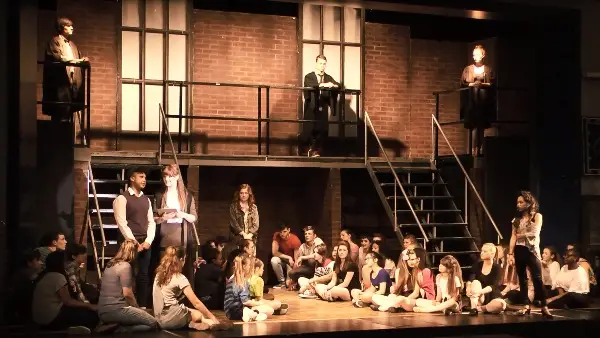Blocking your Play

Blocking your production how to ensure your children are seen
When moving about on the stage, it is easy for children to either distract the audience from the main action or to end up not being seen or heard. Teaching them how to move about on the stage ensures the children can be seen and makes the production more professional.
Start by thinking about how the children will be positioned on the stage. Unless the stage is very raised (by about 80cm to 1m) or the seating is steeply raked, do not have children on sitting or crawling on the stage floor. Only the front row will see them and the audience (and children) will be disappointed - or the rest of the audience will stand up to try and see better, compounding the problems.
If you have a group of children standing in front of one another, try to have them either arranged by size with shorter children at the front, or have some sat on benches or chairs, some standing on the floor, and some standing on benches, so that they can be seen. Children will not organize themselves into size order! Practise this in advance.
For children who need to talk to one another, they need to learn about how to do this whilst still facing the audience, or their voices will be lost off to the sides or back of the stage. They do not need to stand and face each other, just turn slightly towards one another and stand on the diagonal. This will not look odd to the audience, although it will feel odd to the children. This way, the children's facial expressions will be seen, and they will be heard.
If a child needs to turn on stage, they should turn across the front, so their back is never seen by the audience. Their back should only be seen if it is essential to the plot. Again, this will feel odd, but look much better to the audience.
Finally, your cast needs reminding not to move about the stage too much, especially if singing a solo, or delivering a speech. A child who is wandering about the stage will distract from the message they are getting across, whereas if they stand in one place and use gesture/dance etc. as appropriate, the message will be communicated effectively. They don't have to be statues - just make movement purposeful.